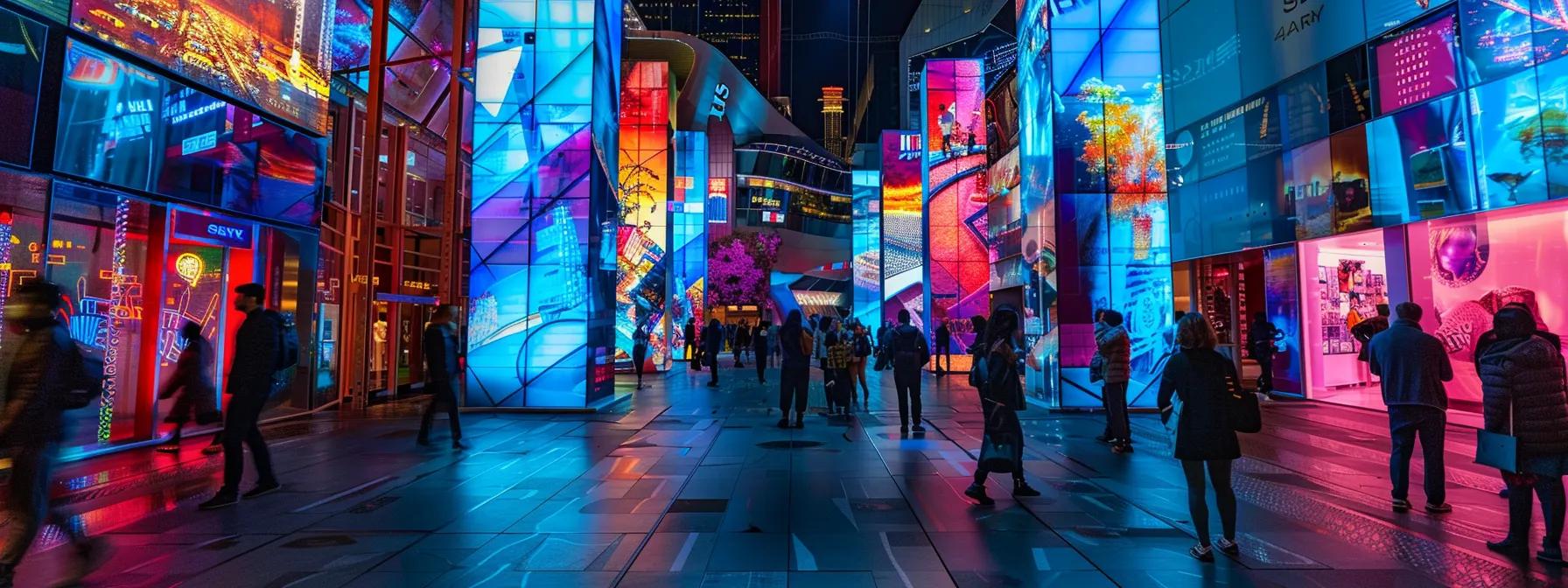In an era where user-generated content (UGC) ads are transforming how brands connect with audiences, choosing the right AI ad generator can be challenging. With numerous options available, marketers often struggle to determine which platform best aligns with their marketing strategy and goals. This post will examine core features of popular AI ad generators, investigate their limitations, and review successful case studies to provide clarity. By the end, readers will gain insights into optimizing influencer marketing efforts and enhancing customer retention through effective tools.
Key Takeaways
- AI ad creation tools utilize advanced algorithms for data-driven, personalized advertising content
- Continuous testing and optimization enhance campaign effectiveness and audience engagement
- Customization options empower advertisers to tailor messages for specific audience segments
- Effective ad performance tracking is critical for refining strategies and maximizing ROI
- Ethical considerations remain essential in automated ad creation to maintain brand integrity
Understand the Core Features of AI Ad Generators

Key capabilities that define AI ad creation tools include automation, data analysis, ugc ads, and accessibility. Understanding the technology behind these processes is essential for effective ad generation. Customization options empower users to tailor campaigns to specific audiences while evaluating data sources highlights the breadth of information utilized. Additionally, the ability of AI to reflect brand voice demonstrates its relevance in enhancing creativity within advertisements.
Identify Key Capabilities That Define AI Ad Creation Tools
One of the primary capabilities that define AI ad creation tools is their proficient copywriting ability. These tools can generate engaging and persuasive content for various platforms, including Facebook ads and email marketing campaigns. By utilizing advanced algorithms, they analyze user input and tailor messages to resonate with specific audiences, ensuring that the advertising content is both relevant and compelling.
Another significant feature is the ability to evaluate performance metrics, allowing advertisers to adjust their strategies based on real-time data. This capability is crucial in online advertising, where understanding the return on investment and the price of ad placements can significantly impact campaign success. By integrating data analytics, AI ad generators empower marketers to make informed decisions, optimizing their campaigns for better engagement and conversions.
Examine the Technology Behind AI Ad Generation Processes
The technology behind AI ad generation processes involves sophisticated machine learning algorithms that enhance the way ad content, especially video ads, is created and optimized. These algorithms analyze large sets of data to understand user behavior and preferences, allowing for tailored messaging that captures attention. For instance, an AI tool may utilize specific syntax patterns to ensure that the language resonates with the target audience, leading to higher engagement rates.
Scalability is another critical aspect of AI ad technologies, enabling marketers to produce multiple versions of ads quickly. With advanced editing features, these tools facilitate rapid adjustments to campaigns, ensuring that advertisers can respond to market changes or user feedback efficiently. This dynamic approach not only saves time but also maximizes impact, as ads can be continuously refined based on performance metrics, ultimately leading to increased conversion rates.
Evaluate the Customization Options Available for Users
Customization options play a vital role in the effectiveness of AI ad generators, allowing users to tailor their campaigns according to specific audience needs and preferences. With features such as predictive analytics built into these tools, advertisers can assess past performance and audience behavior to create more targeted paid ads. Generative artificial intelligence enhances this process by producing content that aligns closely with the brand‘s identity, ensuring relevancy and engagement.
Many AI ad creation platforms offer intuitive interfaces that facilitate customization without requiring extensive technical knowledge. Users can adjust various parameters, including tone, messaging, and visuals, to optimize readability and impact. This flexibility enables advertisers to leverage intelligence from previous campaigns to refine their strategies continuously, ultimately leading to improved conversion rates and enhanced user interactions:
- Tailored messaging that resonates with target audiences.
- Integration of predictive analytics for data-driven decisions.
- Generative artificial intelligence for content creation.
- User-friendly interfaces for easier customization.
- Continuous improvements based on feedback and performance metrics.
Assess the Data Sources Utilized for Generating Ads
Data sources are pivotal for the effectiveness of AI ad generators, ensuring that campaigns are rooted in relevant insights. These tools often leverage extensive data sets, including customer demographics, previous engagement metrics, and real-time market trends. By employing methods such as sentiment analysis, advertisers can gain a nuanced understanding of audience perceptions, leading to more targeted and successful advertising strategies.
Additionally, AI generators utilize a variety of free marketing tools to collect and analyze data, enhancing overall campaign performance. For instance, integrating insights from newsletters can help refine content strategies by revealing what resonates best with subscribers. By employing these data sources and applying actionable tips, advertisers can create compelling campaigns that drive higher engagement and conversion rates:
- Leveraging customer demographics for targeted messaging.
- Utilizing sentiment analysis to gauge audience perceptions.
- Incorporating metrics from newsletters for content strategy.
- Applying insights from free marketing tools for campaign optimization.
Determine How AI Reflects Brand Voice in Advertisements
AI ad generators play a pivotal role in reflecting brand voice by utilizing advanced algorithms to analyze an organization‘s existing communication style and context. This process allows for the creation of ads that resonate with audiences, driving customer engagement through consistent messaging and visuals. For instance, tools like Sprout Social incorporate both graphics and written content that align with the brand’s identity, ensuring that every advertisement mirrors the established voice and tone.
By harnessing a well-rounded digital marketing stack, marketers can ensure that the output not only communicates effectively but also captures the essence of the brand. Utilizing AI technology enables the customization of messages tailored to different audience segments, ultimately enhancing the effectiveness of campaigns. As AI adapts to feedback and historical performance metrics, brands can remain agile, ensuring their voice remains relevant and engaging in the ever-changing landscape of customer preferences.
With a solid grasp of AI ad generators’ core features, the next step unfolds. Now, it’s time to compare the leading options available and see which one stands out.
Compare Popular AI Ad Generators in the Market

The following analysis reviews popular AI ad generators and their unique offerings, focusing on crucial aspects that influence performance. It examines user interface and experience across platforms, evaluates pricing structures and subscription models, and assesses integration capabilities with essential content marketing tools. Additionally, the effectiveness of ad performance tracking features will be ranked, providing a comprehensive assessment for advertisers seeking optimal solutions in the digital landscape.
Analyze Top AI Ad Generators and Their Unique Offerings
Leading AI ad generators in the market offer distinct features designed to enhance user experiences and streamline ad creation. For instance, some platforms utilize a drag-and-drop interface, allowing advertisers to easily customize their content without technical expertise. This innovation simplifies the design process and empowers users to create visually appealing ads quickly, catering to their specific needs efficiently.
Another noteworthy aspect is the integration of virtual assistant functionalities within these tools. By leveraging AI-driven insights and suggestions, users can create targeted campaigns that resonate with their audience. These features often include the use of white papers and blog posts that provide in-depth information about best practices, ultimately guiding advertisers toward data-driven strategies that maximize their ad performance:
- Drag-and-drop interfaces enhance user experience.
- Virtual assistants provide valuable insights and recommendations.
- White papers and blog posts offer useful resources for advertisers.
Review User Interface and Experience Across Platforms
When assessing user interface and experience across various AI ad generators, customer experience emerges as a crucial factor that influences effectiveness. Platforms that prioritize usability typically offer intuitive interfaces, facilitating seamless navigation and encouraging brainstorming sessions for marketers. This design approach streamlines the ad creation process, enabling users to implement strategies efficiently without technical barriers, which is essential for driving campaign success.
The pricing structure is also a significant consideration when comparing platforms. Many AI ad generators manifest features that cater to different budget levels while maintaining access to a robust database of tools and integrations. By ensuring that users can choose an option that fits their financial needs while still benefiting from advanced functionalities, these platforms enhance overall satisfaction and enable marketers to develop effective advertising strategies tailored to their target audiences.
Evaluate Pricing Structures and Subscription Models
When evaluating AI ad generators, pricing structures and subscription models play a significant role in determining the best fit for an organization. Many platforms offer tiered pricing options that cater to different budgets, allowing users to select a plan that aligns with their specific needs. This flexibility is especially beneficial for businesses seeking to balance quality and affordability while maintaining access to key features such as graphic design tools and performance analytics.
Competitor analysis reveals that some AI ad generators include all-encompassing plans, while others may require additional fees for advanced functionalities or mobile app access. Understanding these various pricing elements can guide advertisers in making informed decisions that maximize their investment in ad creation. By comparing subscription models, organizations can ensure they achieve the desired outcomes without overspending, ultimately enhancing their advertising strategies for greater impact.
Assess Integration Capabilities With Marketing Tools
Integration capabilities with marketing tools are essential when evaluating AI ad generators, as they enhance the overall functionality and user experience. Platforms that seamlessly connect with existing systems, such as customer relationship management (CRM) software and marketing automation tools enable marketers to streamline their processes. For instance, integrating these generators with chatbots can allow for real-time consumer interactions, thereby enhancing engagement and conversion rates.
Furthermore, the compatibility of AI ad generators with video content and marketing solutions lays the groundwork for comprehensive advertising strategies. As brands explore innovative avenues such as the metaverse, ensuring that advertising tools can work cohesively with diverse marketing strategies becomes paramount. This holistic approach not only enriches consumer experiences but also drives efficiency, enabling organizations to respond quickly to shifting market dynamics:
- Integration with chatbots for enhanced consumer interaction.
- Seamless connectivity with marketing automation tools.
- Support for video content to amplify advertising efforts.
- Flexibility to adapt in emerging spaces like the metaverse.
- Efficiency in deploying campaigns across various channels.
Rank the Effectiveness of Ad Performance Tracking Features
The effectiveness of ad performance tracking features is critical for assessing how well AI ad generators meet advertisers’ goals. Platforms that utilize machine learning can analyze user behavior to provide insights into audience engagement and attention metrics. For instance, tools like Synthesia excel in delivering detailed analytics, making it easier for marketers to refine their campaigns based on real-time performance data.
Ad performance tracking becomes even more impactful when integrated with email marketing tools, as it allows for a comprehensive understanding of the multi-channel customer journey. Effective AI ad generators not only present actionable insights but also facilitate adjustments to ongoing campaigns, ensuring that advertisers can respond swiftly to shifts in audience preferences. This capability ultimately enhances overall marketing effectiveness and ROI.
While many AI ad generators shine in their capabilities, they also come with shadows. It is essential to examine these limitations closely, as understanding them can lead to better choices.
Investigate the Limitations of AI Ad Generators

Investigate the Limitations of AI Ad Generators
AI ad generators, while offering substantial benefits, face several challenges that can impact user experience and productivity. Common issues include limited creativity in ad content, which may hinder engagement, and problems with targeting accuracy that affect audience reach. Furthermore, the reliability of large language models in understanding context can create inconsistencies, and ethical considerations surrounding automated ad creation add another layer of complexity. Each of these factors warrants careful evaluation, emphasizing the need for marketers to understand the limitations inherent in these tools.
Identify Common Challenges Faced by AI Ad Tools
AI ad generation tools present several challenges that marketing teams must navigate. One significant issue is the limited capacity to evoke emotion in content creation, which can lead to advertisements that feel generic rather than engaging. This lack of emotional resonance often diminishes the effectiveness of ads, as they fail to connect with target audiences on a deeper level, ultimately impacting campaign performance metrics.
Additionally, the reliance on analytics can complicate the creative process. Marketing teams may focus too heavily on data-driven insights, causing them to overlook the nuances of audience preferences that fall outside typical trends. This analysis can lead to a formulaic approach to advertising, whereby the unique brand voice and innovative ideas are sacrificed in pursuit of measurable results on search engines, resulting in less impactful campaigns.
Discuss the Impact of Limited Creativity in AI-generated Ads
Limited creativity in AI-generated ads can lead to a uniformity that diminishes audience engagement. When advertisements lack unique and emotional elements, they often do not resonate with potential customers, impacting overall advertising campaign effectiveness. For sectors such as retail, where competition is fierce, this can result in lower conversion rates on landing pages and reduced performance across social media platforms.
An insufficient creative touch may also affect how brands assess risk in their marketing strategies. Without innovative concepts and engaging content, advertisers could inadvertently miss opportunities for differentiation in their campaigns. This limitation highlights the importance of balancing data-driven insights with creative input to create compelling advertisements that can successfully capture and maintain consumer attention.
- Uniformity in AI-generated ads often leads to lower audience engagement.
- Limited creativity diminishes brand differentiation in competitive sectors.
- AI tools may hinder emotional connection, affecting conversion rates.
- Data-driven strategies must be supplemented with creativity for better outcomes.
Explore Issues With Targeting Accuracy and Audience Reach
Targeting accuracy remains a significant challenge for many AI ad generators, impacting their ability to effectively reach intended audiences. A tool like Anyword may excel in generating compelling copy, yet without meticulous targeting, ads may fall flat in engaging potential customers. Implementing a detailed storyboard for ad campaigns can help refine targeting strategies, ensuring that advertisements resonate with specific demographics. Misguided targeting not only diminishes the relevance of ads but can also waste valuable advertising budgets, thereby undermining competitive advantage.
Moreover, the effectiveness of audience engagement can be hindered by the limitations of the interface provided by these ad generators. If a platform lacks intuitive features that enable marketers to manage audience segments, it may lead to oversights in reaching key demographics. In email marketing, for example, poorly targeted messages can result in lower open rates and engagement levels. By enhancing targeting capabilities, AI ad tools can improve overall campaign performance and provide advertisers with the insights needed to refine their strategies continuously.
Evaluate the Reliability of AI in Understanding Context
The reliability of AI in understanding context presents notable challenges, especially when applied to areas like social media marketing and email campaigns. While AI tools can analyze vast data sets, they often struggle to interpret nuanced language or cultural references inherent in user-generated content. This limitation can lead to misguided messaging that fails to resonate with the target audience, ultimately affecting brand engagement and campaign effectiveness.
Additionally, the need for continuous research and adjustments is paramount to enhance AI’s contextual awareness. For example, without robust feedback mechanisms, an email marketing tool may misinterpret audience expectations, leading to generic outreach strategies. Advertisers must be vigilant in monitoring AI-generated content to ensure that it accurately reflects the brand‘s voice and aligns with audience sentiments:
- Challenges in AI’s contextual interpretation affect engagement.
- Misguided messaging can harm brand reputation.
- Continuous research is essential for improved AI performance.
- Monitoring AI outputs helps ensure brand alignment.
Examine Ethical Considerations in Automated Ad Creation
Ethical considerations in automated ad creation have gained prominence as advertisers increasingly rely on AI-driven tools. Issues such as transparency in content generation and the potential for bias in algorithms raise concerns about the fairness and integrity of advertising practices. As AI uses natural language processing to create persuasive messages, brands must ensure that their campaigns uphold ethical standards by avoiding misleading content and ensuring diverse representation.
The collaboration between marketers and AI tools is essential to mitigate risks associated with automated advertising. Utilizing platforms like Zapier can streamline workflows while reducing the learning curve when integrating ethical practices into AI ad generation. Advertisers must remain vigilant about the ethical implications of the generated content, actively evaluating how competitive intelligence informs their strategies to foster responsible advertising approaches that resonate with consumers:
- Transparency in content generation.
- Addressing bias in algorithms.
- Collaboration between marketers and AI tools.
- Utilization of platforms like Zapier for workflow efficiency.
- Evaluating ethical implications in generated content.
AI ad generators have their flaws, but they also hold great promise. As the landscape shifts, the future of AI in advertising technologies beckons with opportunities yet to be explored.
Assess the Future of AI in Advertising Technologies

Anticipating the future of AI in advertising technologies involves understanding key developments that will shape its evolution. Upcoming trends include advancements in machine learning for enhanced ad customization, integration of AI with augmented and virtual reality, and potential shifts in user preferences toward AI-driven ad strategies. Additionally, regulatory changes will significantly affect how AI is utilized in content marketing, particularly in tailoring ads to target audiences while adhering to standards of transparency and ethical practices.
Predict Upcoming Trends in AI Ad Generation Advancements
As AI ad generators continue to evolve, upcoming trends point toward enhanced natural language generation capabilities that will revolutionize content creation. This advancement will empower marketing tools to produce highly personalized ad copy that resonates with target audiences, significantly improving engagement rates. Moreover, integrating keyword research functionalities, such as those offered by Surfer SEO, will enable marketers to optimize their advertisements more effectively, aligning content with search engine optimization best practices.
In addition, the fusion of AI technology with advanced analytics will yield powerful insights for advertisers. Future developments are likely to involve real-time performance tracking that leverages machine learning to refine ads based on consumer behavior. This transformation will help marketers make data-driven decisions, increasing the overall efficacy of campaigns, as they tailor content dynamically to meet evolving audience needs:
- Enhanced natural language generation for personalized ad copy.
- Integration of Surfer SEO for improved keyword research.
- Real-time performance tracking with advanced analytics.
- Dynamic content adjustments based on consumer behavior.
Analyze the Role of Machine Learning in Ad Customization
Machine learning plays a pivotal role in enhancing ad customization, improving copy to align precisely with audience preferences. By analyzing vast amounts of data, these algorithms can identify patterns that inform marketers about the most effective messaging strategies. This capability reduces risk by enabling advertisers to create personalized campaigns that resonate deeply with their target demographics, ultimately leading to higher engagement rates.
Furthermore, the integration of machine learning into the ad creation workflow significantly boosts usability, allowing users to adapt their strategies based on real-time feedback. As advertisers harness these sophisticated technologies, they gain insights that facilitate the dynamic adjustment of ad content. The ability to fine-tune personalization in real-time not only elevates the customer experience but also enhances overall campaign performance, addressing the evolving needs of consumers in an increasingly competitive landscape.
Explore the Integration of AI With AR and VR in Advertising
The integration of AI with augmented reality (AR) and virtual reality (VR) is transforming advertising by facilitating more immersive and engaging customer interactions. Advertisers leverage AI tools to enhance audience segmentation, enabling tailored experiences that resonate deeply with specific demographics. This strategy not only improves customer service by providing personalized content but also fosters higher engagement and satisfaction, ultimately driving better return on investment.
Moreover, the incorporation of AI into AR and VR campaigns streamlines the ad creation process, enhancing efficiency in content production. For instance, brands can utilize AI algorithms to quickly generate realistic virtual environments that serve as platforms for interactive advertisements. Such innovative approaches empower marketers to create compelling narratives around their products, effectively capturing the attention of potential customers while maximizing impact:
- AI enhances audience segmentation for personalized experiences.
- Immersive campaigns improve customer service and satisfaction.
- Streamlined ad creation increases overall efficiency.
- Realistic environments drive engagement and interaction.
- Targeted strategies improve return on investment for advertisers.
Discuss Potential User Shifts Towards AI-driven Ad Strategies
As businesses seek to increase efficiency in their advertising strategies, a noticeable shift toward AI-driven solutions is becoming evident. Marketers are recognizing the ability of AI ad generators to produce personalized and engaging content that resonates with target audiences, thereby elevating campaign effectiveness. This transition is not merely about adopting new technology; it reflects a broader trend of leveraging data analytics to enhance decision-making through tailored advertising strategies.
In conjunction with this growing interest in AI solutions, advertisers are also becoming more aware of the tools that offer seamless integration with existing marketing platforms. Efficient performance tracking offered by these generators aids in refining campaigns and ensures that marketing teams can adapt efforts in real-time based on audience interactions. Such advancements suggest that the future of advertising will likely lean heavily on AI-driven strategies to improve overall engagement and conversion rates, presenting opportunities for brands to optimize their outreach in a dynamic market:
- Growing emphasis on AI-driven solutions for improved campaign efficiency.
- Enhanced personalization through data analytics fosters audience connection.
- Seamless integration with marketing tools enables responsive strategies.
- Real-time performance tracking aids in campaign refinement.
- Potential for increased engagement and conversion rates with AI technologies.
Examine Regulatory Changes Affecting AI in Marketing
The landscape of AI in marketing is evolving due to regulatory changes aimed at ensuring transparency and ethical use. As governments worldwide introduce guidelines to govern AI technologies, advertisers must adapt their strategies to remain compliant while still achieving their marketing objectives. These regulations may include requirements for clear disclosures on how consumer data is used and limits on intrusive advertising techniques, which can impact the capabilities of various AI ad generators.
In response to these regulatory shifts, companies must prioritize ethical practices in their AI advertising strategies. For instance, maintaining compliance could involve regularly updating privacy policies or integrating more stringent data protection measures within AI systems. Advertisers utilizing AI ad generators will need to stay informed about these changes and consider platforms that not only comply with regulations but also enhance trust with consumers through responsible data usage and transparent communication:
- Governments are introducing regulations to ensure transparency and ethical AI usage.
- Compliance requirements include clear disclosures on consumer data usage.
- Advertisers should prioritize ethical practices in their AI strategies.
- Updating privacy policies and data protection measures is essential.
- Choosing compliant AI ad generators enhances consumer trust.
The future of AI in advertising holds promise and uncertainty. Next, examining real-life examples reveals how these technologies have brought success to brands.
Review Case Studies on AI Ad Generator Successes

This section reviews remarkable case studies highlighting brands that have effectively utilized AI for advertising. It examines key metrics achieved through AI-generated ads, alongside insights from industry experts regarding essential KPIs. Additionally, testimonials from users provide valuable perspectives, while lessons learned from successful AI ad campaigns offer practical guidance for advertisers aiming to maximize their results.
Highlight Brands That Successfully Used AI for Advertising
One notable example of successful AI utilization in advertising is the case of Coca-Cola, which employed AI-generated ads to optimize its marketing strategies. By leveraging data-driven insights, the brand could create personalized advertisements that resonated with different audience segments across various platforms, significantly increasing engagement rates. This approach highlighted the power of AI in tailoring messages that align with consumer preferences, showcasing how effective AI ad generators can enhance campaign performance.
Another impactful instance is the campaign run by BMW, which incorporated AI to streamline the creation of dynamic video ads. The integration of AI technology allowed BMW to automatically generate visuals and narrative content tailored to specific market demographics, resulting in higher conversion rates. This case exemplifies how AI can not only increase efficiency in ad production but also provide brands with the flexibility to adapt their outreach strategies based on data analytics and real-time feedback.
Analyze the Metrics Achieved Through AI-generated Ads
AI-generated ads have demonstrated notable improvements in key performance metrics, showcasing the potential these tools have to influence marketing outcomes positively. For example, companies that implemented AI ad generators saw a significant increase in click-through rates, sometimes exceeding 30% compared to traditional advertising methods. This enhancement can be attributed to the AI’s ability to analyze audience preferences and tailor content accordingly, ensuring that advertisements resonate with the target demographics.
Furthermore, AI tools have been effective in optimizing conversion rates, with some brands reporting increases of up to 25% after switching to AI-driven campaigns. These improvements stem from more precise targeting strategies and the capability to analyze real-time analytics to adjust campaigns dynamically. Such metrics not only underline the effectiveness of AI ad generators but also highlight their crucial role in refining advertising efforts for maximum engagement and return on investment:
- Increased click-through rates by over 30%.
- Optimized conversion rates with improvements of up to 25%.
- Effective audience targeting based on preferences.
- Real-time analytics for dynamic campaign adjustments.
Gather Insights From Industry Experts on AI KPIs
Industry experts emphasize the importance of utilizing key performance indicators (KPIs) when evaluating the effectiveness of AI ad generators. Metrics such as click-through rates, conversion rates, and return on advertising spend provide critical insights into how well these tools engage target audiences. For instance, brands adopting AI-driven strategies have reported substantial improvements in these KPIs, indicating that a well-implemented AI ad strategy can significantly enhance marketing outcomes.
Furthermore, experts recommend focusing on specific KPIs that align closely with business objectives. By analyzing performance data, advertisers can fine-tune their campaigns, ensuring that the content not only resonates with consumers but also meets overall marketing goals. This data-driven approach allows organizations to adapt quickly to consumer behavior, making AI ad generators a valuable asset in maximizing efficiency and effectiveness in advertising strategies.
Discuss Testimonials From Users of AI Ad Generators
Users of AI ad generators frequently share positive feedback regarding their ability to streamline advertising processes and improve overall efficiency. Many marketers emphasize how these tools can generate targeted and compelling content quickly, allowing them to focus more on strategy rather than content creation. For instance, a digital marketing manager noted that using an AI ad generator reduced their ad production time by over 50%, ultimately leading to increased campaign effectiveness.
Testimonials also highlight the adaptability of AI tools in catering to unique brand needs. A business owner mentioned their success in leveraging AI for personalized advertisements, resulting in higher engagement rates across various platforms. This customization feature has proven essential for many advertisers, as it enables them to resonate with specific audience segments more effectively. Examples of feedback include:
- Time-saving capabilities that enhance productivity.
- Improved targeting, leading to higher click-through rates.
- Flexibility in adjusting campaigns based on real-time performance data.
Explore Lessons Learned From AI Ad Campaign Successes
Analyzing successful AI ad campaigns reveals key lessons that can benefit marketers in maximizing their strategies. One crucial insight is the importance of personalization; brands that utilized AI to tailor their messaging according to audience preferences achieved significantly higher engagement rates. This demonstrates that understanding consumer behavior and preferences can lead to more compelling advertisements that resonate more with specific demographics.
Another valuable lesson involves the need for continuous optimization based on performance data. Successful brands collected real-time analytics to refine their campaigns dynamically, resulting in improved conversion rates. This proactive approach emphasizes that adapting strategies in response to audience feedback is essential for leveraging the full potential of AI ad generators and ensuring sustained campaign success.
The successes of AI ad generators offer valuable lessons. Now, it is time to uncover the best practices that can guide any advertiser to greater results.
Learn Best Practices for Using AI Ad Generators

Implementing best practices for using AI ad generators is essential for maximizing campaign effectiveness. Strategies for effective ad copy creation ensure that content resonates with the target audience. Optimizing visual elements enhances engagement, while maintaining brand consistency across all generated content fosters trust. Testing and iterating ad campaigns alongside monitoring analytics will guide informed adjustments, driving improved results over time.
Implement Strategies for Effective Ad Copy Creation
When implementing strategies for effective ad copy creation, marketers should focus on clarity and engagement. Utilizing AI ad generators can streamline this process by analyzing successful copy patterns and suggesting effective phrases that resonate with target audiences. For instance, leading platforms often recommend clarity over complexity, emphasizing the importance of straightforward messaging that quickly captures attention.
Additionally, continuous testing and optimization are essential in refining ad copy. By leveraging the analytical capabilities of AI tools, advertisers can track engagement metrics to identify which messages perform best. This proactive approach ensures that ad campaigns remain relevant and appealing, fostering better connections with consumers and enhancing overall campaign effectiveness:
- Focus on clear and engaging messaging.
- Utilize AI for copy pattern analysis.
- Employ continuous testing to refine ad copy.
- Leverage analytics to track engagement metrics.
- Adjust strategies based on performance insights.
Optimize Visual Elements Alongside AI Ad Production
Optimizing visual elements is critical in conjunction with AI ad production, as the right imagery can significantly enhance audience engagement. Advertisers should leverage AI tools that provide high-quality graphics and design options to ensure that visual content aligns with the campaign’s goals and brand identity. For example, tools that allow for customization of visual elements in real time help marketers maintain a cohesive look that captures attention and effectively communicates their message.
Moreover, emphasizing clarity and simplicity in visuals can improve overall campaign effectiveness. AI ad generators often feature templates that guide users in creating visually appealing content without needing extensive design experience. By choosing vibrant images and clear fonts, advertisers can ensure that their ads stand out, ultimately resulting in higher click-through rates and increased conversions across various platforms.
Ensure Brand Consistency Across AI-generated Content
Ensuring brand consistency across AI-generated content is crucial for maintaining a recognizable identity. Advertisers should establish clear brand guidelines, including tone, style, and color schemes, that AI tools can reference during content creation. This approach helps deliver a cohesive message across various advertising platforms, fostering customer trust and loyalty.
Furthermore, organizations can utilize feedback mechanisms to fine-tune AI outputs, ensuring that generated content aligns with their established brand voice. By regularly reviewing AI-generated ads for consistency, marketers can provide insights into adjustments needed for visual elements and messaging. This ongoing process not only enhances brand integrity but also improves overall campaign effectiveness in a competitive environment.
Test and Iterate Ad Campaigns for Improved Results
Testing and iterating ad campaigns is a crucial practice for maximizing the effectiveness of AI ad generators. By assessing performance metrics such as click-through rates and conversion rates, marketers can identify which elements resonate best with their audiences. This data-driven approach allows for adjustments to be made in real time, ensuring that campaigns continuously improve and adapt to changing consumer preferences.
Furthermore, employing a systematic approach to A/B testing plays a vital role in refining ad content. Marketers can create variants of their advertisements using different messaging or visuals to gauge audience response. This practice not only enhances engagement but also informs future strategies, allowing advertisers to harness the full potential of AI tools to optimize their returns and maintain a competitive edge in the dynamic landscape of digital marketing.
Monitor Analytics to Inform Future Ad Adjustments
Monitoring analytics is essential for advertisers using AI ad generators, as it provides valuable insights into campaign performance. By regularly tracking key metrics such as click-through rates and conversion rates, marketers can identify trends that reveal what resonates with their target audience. This data-driven approach allows for strategic adjustments based on real-time feedback, ensuring that advertising strategies remain effective and aligned with consumer preferences.
Furthermore, utilizing advanced analytics tools can facilitate deeper understanding and enhance the efficacy of future ad campaigns. Advertisers are encouraged to implement A/B testing methods to compare various elements of their ads, such as imagery or messaging styles. This ensures continuous improvement in campaign performance as advertisers refine their strategies for optimal engagement and higher returns on investment:
- Regularly track key metrics like click-through and conversion rates.
- Utilize analytics tools for deeper insights into campaign performance.
- Implement A/B testing to compare different advertisement elements.
- Adjust strategies based on real-time feedback and data analysis.
- Focus on continuous improvement for optimal engagement.
Conclusion
In the competitive landscape of digital marketing, selecting the right AI ad generator can significantly impact campaign effectiveness and overall success. Advertisers must carefully assess each platform’s unique capabilities, including customization options, performance tracking, and integration features, to ensure alignment with their specific goals. By prioritizing tools that enhance creativity, adaptability, and data-driven insights, organizations can optimize their advertising strategies for maximum engagement. Ultimately, the quest for the ideal AI ad generator is crucial for harnessing the full potential of automated advertising in today’s dynamic market.